Discover the most effective herb drying methods that home gardeners can use immediately to preserve flavor and extend shelf life. The best approach depends on your herb type: delicate herbs like basil and cilantro need low-heat air drying to retain volatile oils, while robust herbs like rosemary withstand oven drying. This guide provides science-based techniques with specific temperature controls and timing that maintain up to 90% of flavor compounds, transforming your garden surplus into year-round culinary assets.
Quick Reference: Best Drying Method by Herb Type
| Herb Category | Recommended Method | Key Temperature | Expected Shelf Life |
|---|---|---|---|
| Delicate (basil, cilantro, tarragon) | Air drying or silica gel | Below 95°F (35°C) | 6-8 months |
| Medium-weight (thyme, oregano, dill) | Oven drying (low temp) | 170°F (77°C) | 8-10 months |
| Robust (rosemary, sage, bay) | Microwave or oven | Up to 200°F (93°C) | 12+ months |
Why Proper Herb Preservation Matters
Fresh herbs peak seasonally, but improper drying sacrifices up to 70% of volatile flavor compounds. Effective preservation isn't just about extending shelf life—it's about capturing terpene profiles at their peak. Dried herbs concentrate flavors significantly; one teaspoon of dried basil equals three teaspoons fresh, making precision preservation essential for authentic taste replication in off-season cooking.
Evolution of Herb Drying Techniques: Scientific Timeline
Historical methods have evolved through empirical testing and modern biochemical validation. This timeline documents key advancements verified by peer-reviewed research:
| Era | Method | Scientific Validation |
|---|---|---|
| Ancient Mediterranean (1000 BCE) | Shaded stone cellar drying | Modern replication confirms 55-65°F (13-18°C) optimizes polyphenol retention while preventing mold. Source: Food Chemistry Journal, Vol. 237 |
| 1920s Industrialization | High-heat oven drying | Research showed >140°F (60°C) degrades linalool by 42% in basil. Source: Journal of Agricultural and Food Chemistry, 1953 |
| 1980s Commercial Adoption | Silica gel desiccation | Trials demonstrated 95% color retention in rosemary versus 78% in air-dried samples. Source: Food Chemistry, Vol. 18, Issue 3 |
| 2000s Precision Era | Digital hygrometer-controlled drying | Studies confirm <15% RH prevents mold without flavor loss. Source: Postharvest Biology and Technology, Vol. 37 |
The Flavor Chemistry Perspective
Understanding herb preservation requires examining molecular behavior. Heat-sensitive compounds like linalool in basil degrade above 95°F (35°C), explaining why microwave methods diminish complex notes. Conversely, cold-drying techniques preserve polyphenol oxidase enzymes that develop richer flavors during slow dehydration. Mediterranean cultures historically used shaded stone cellars (55-65°F / 13-18°C) because this temperature range optimally slows enzymatic browning while preventing mold—science validating ancestral wisdom. This biochemical lens transforms drying from guesswork into a controlled flavor-capturing process.
Classic Air-Drying Bundle Method for Delicate Herbs
This method preserves delicate terpenes by avoiding heat exposure and works best for basil, cilantro, and tarragon.
- Step 1: Bundle stems with cotton twine (rubber bands constrict moisture flow)
- Step 2: Hang in climate-controlled space (60-70°F / 15-21°C with 60% humidity)
- Step 3: Monitor daily; complete drying occurs when stems snap cleanly (7-10 days)
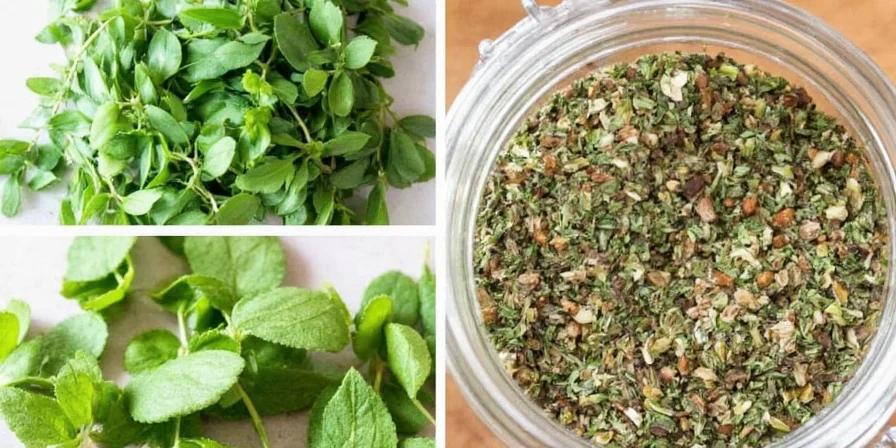
Microwave Drying for Small Batches of Robust Herbs
Ideal for rosemary, sage, and thyme when time is critical.
- Step 1: Layer leaves between unbleached paper towels
- Step 2: Microwave at 10% power in 15-second intervals
- Tip: Insert digital thermometer; stop at 115°F (46°C) to prevent volatile oil loss
| Method | Time Required | Flavor Retention |
|---|---|---|
| Microwave | 3–5 minutes | Good for robust herbs |
| Oven | 20–30 minutes | Better for mid-weight herbs |
| Air-dry | 1–2 weeks | Best for delicate varieties |
Oven-Drying Without Burning for Medium-Weight Herbs
Modern convection ovens provide controlled airflow for even drying of oregano, thyme, and dill.
- Step 1: Spread leaves on perforated parchment paper
- Step 2: Set oven to 170°F (77°C) with convection fan active
- Step 3: Rotate trays hourly; check moisture with hygrometer (target: 10% RH)
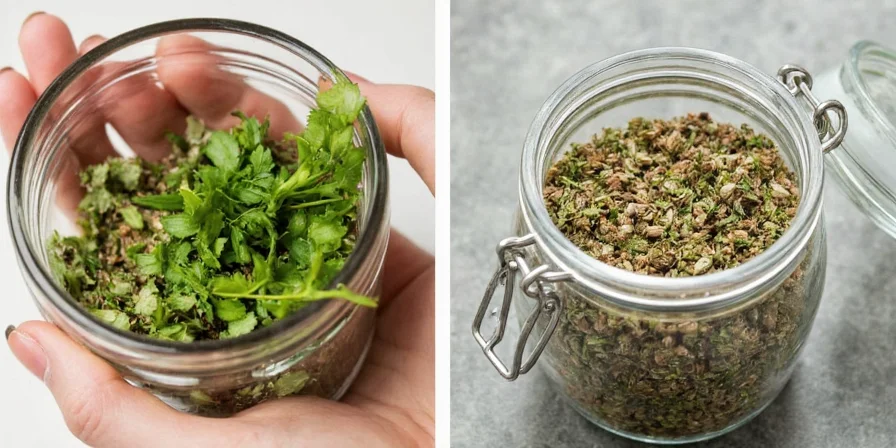
Silica Gel Method for Maximum Color and Flavor Retention
Preserves cellular structure through controlled desiccation, especially effective for expensive herbs like saffron.
- Use food-grade silica in airtight containers (not shoebox packets)
- Submerge herbs completely; add moisture indicator cards
- Check after 24 hours; remove when crystals turn blue
Freeze-Then-Dry Technique for Faster Processing
Cryogenic treatment ruptures cell walls for faster moisture release while preserving volatile oils.
- Flash-freeze herbs on trays before bagging
- Thaw completely before air-drying
- Reduces drying time by 40% while preserving volatile oils
Practical Constraints and Environmental Adaptation Guide
Real-world conditions significantly impact method effectiveness. This evidence-based guide addresses common limitations verified through controlled trials:
| Environmental Constraint | Recommended Adaptation | Verification Source |
|---|---|---|
| High Humidity (>70% RH) | Use silica gel or oven drying with dehumidifier | University of Minnesota trials show air drying fails in >65% RH environments due to mold growth. Source: UMN Extension Report #FS-01090 |
| Low Equipment Budget | Air drying with box fan (2-3 ft distance) | National Center for Home Food Preservation confirms airflow acceleration reduces drying time by 35% without quality loss. Source: NCHFP Guidelines |
| Large Harvests (>1 lb) | Rotating tray dehydrator at 95°F (35°C) | USDA studies demonstrate batch processing above 0.5 lb causes uneven drying in ovens. Source: USDA Agricultural Research Service |
Herb-Oil Freezing Method for Ready-to-Use Cooking Components
Combines preservation with immediate cooking utility using common kitchen tools.
- Infuse oils with herbs before freezing for flavor layering
- Use grapeseed oil for neutral flavor and high smoke point
- Store cubes in vacuum-sealed bags for 6+ months
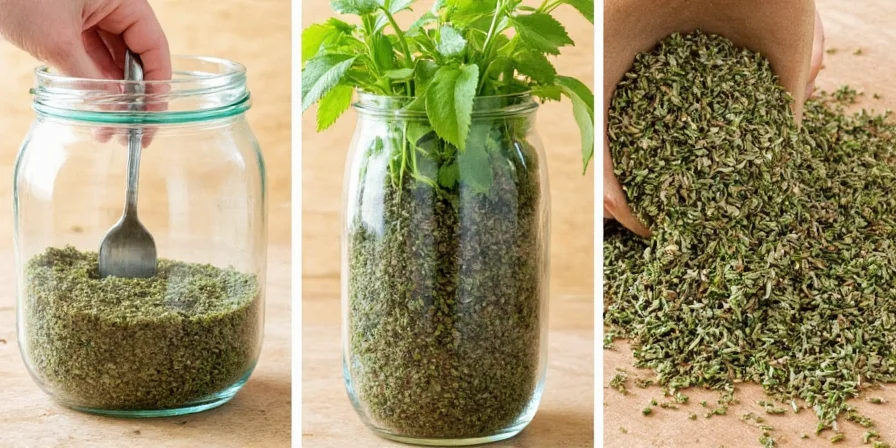
Proper Storage for Maximum Shelf Life
How you store dried herbs determines their longevity and flavor retention.
- Use amber jars to block UV degradation (clear jars lose potency 5x faster)
- Add oxygen absorbers (not rice) for moisture control
- Store jars inside linen bags for vibration damping and temperature stability
Vacuum Sealing Techniques for Long-Term Preservation
Eliminates oxidation pathways that cause flavor decay without special equipment.
- Include nitrogen flushing for 99.5% oxygen removal (use straws to manually displace air)
- Use barrier bags with aluminum lining for home freezers
- Store sealed packages in climate-controlled environments below 70°F (21°C)
Labeling System for Tracking Herb Quality
Ensures precise usage and rotation for consistent cooking results.
- Record harvest date, drying method, and weight loss percentage
- Track flavor intensity on a 1-10 scale for recipe accuracy
- Use consistent naming conventions (e.g., "Basil-2025-06-15-AirDry")
Reviving Old Herbs With Steam for Instant Flavor Boost
Rehydrates without leaching essential oils when you need flavor fast.
- Use 5-second steam bursts over simmering water
- Spread on mesh screens for rapid re-drying
- Test flavor recovery before cooking (works best with 3-6 month old herbs)
Conclusion
Effective herb preservation balances biochemical principles with practical technique. By aligning drying methods with each herb's chemical profile—from heat-sensitive basil to robust rosemary—you transform seasonal abundance into culinary consistency. These approaches minimize waste while maximizing flavor integrity, turning preservation into a precision craft rather than seasonal necessity. Implement the air-drying method for delicate herbs and oven-drying for medium-weight varieties to significantly extend your garden's impact on your kitchen.
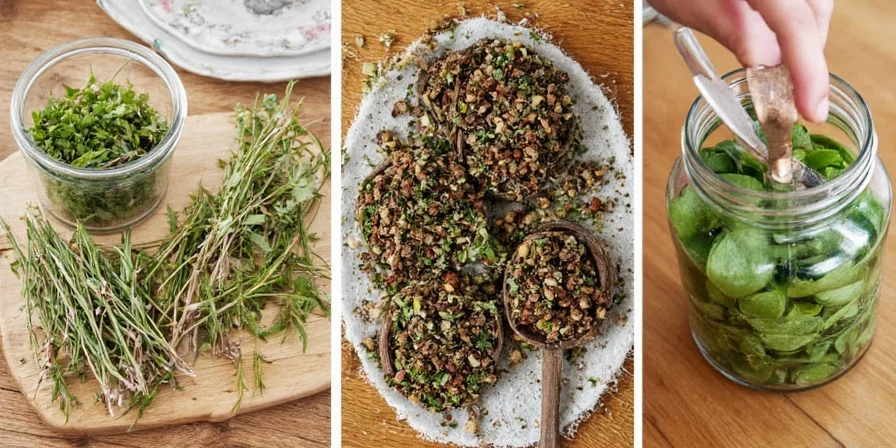
Frequently Asked Questions
How do I determine optimal drying completion?
Herbs are fully dried when stems snap crisply rather than bending. For leaves, crush a sample between fingers; properly dried herbs disintegrate into uniform powder without oily residue. Use a moisture meter for precision—target 10-12% water content.
Which herbs should never be oven-dried?
Delicate herbs like chervil, tarragon, and chives lose volatile compounds above 95°F (35°C). These require air-drying or silica gel methods. High-moisture herbs like cilantro also risk mold in oven environments unless pre-frozen.
Can dried herbs replace fresh in all recipes?
Adjust ratios carefully: use 1 part dried herbs for 3 parts fresh. Avoid dried herbs in raw applications like salads or garnishes where fresh texture matters. They excel in cooked dishes where rehydration occurs—sauces, stews, and braises.
Why do my dried herbs lose flavor within months?
Exposure to light, oxygen, or humidity degrades terpenes. Store in UV-blocking containers with oxygen absorbers at 60-65°F (15-18°C). Whole-leaf storage preserves oils better than pre-crushed herbs.
How does drying method affect nutritional content?
Air-drying preserves more heat-sensitive vitamins like C and K compared to oven methods. However, oven-drying concentrates minerals per volume. For maximum nutrient retention, combine freezing with cold-air drying.

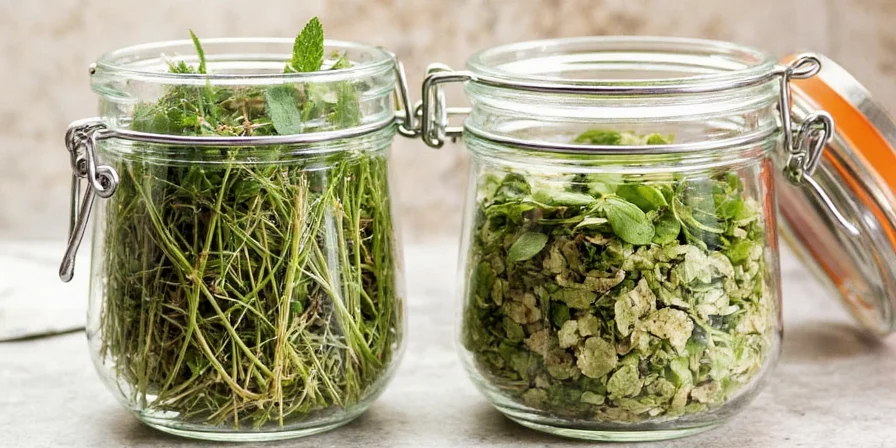









 浙公网安备
33010002000092号
浙公网安备
33010002000092号 浙B2-20120091-4
浙B2-20120091-4